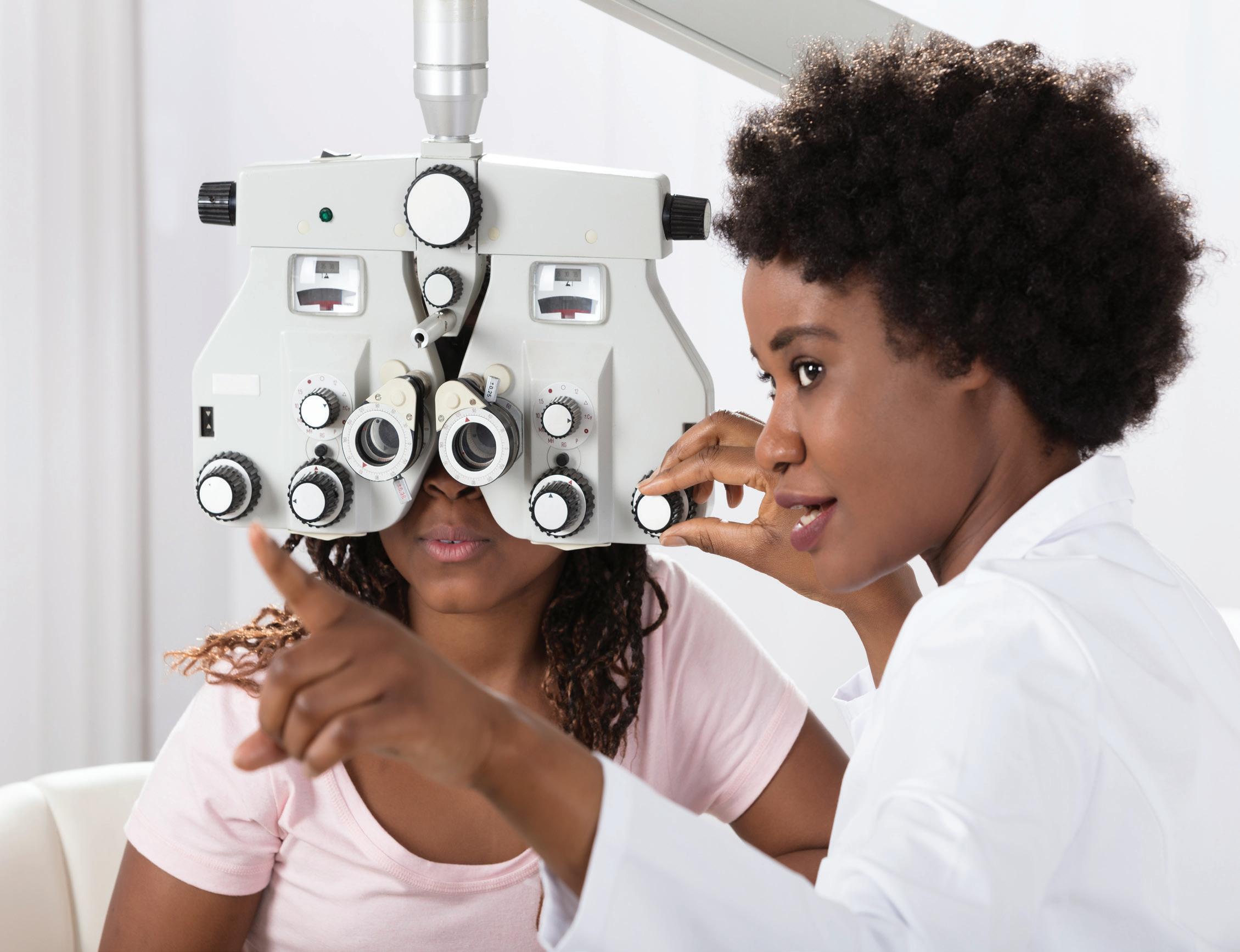
4 minute read
What is Covered and Discussed During an Eye Exam?
HISTORY
• Reason for visit – The reason for visit is a statement describing your primary goal for the appointment. The technician will obtain the reason for the visit so the provider can properly address your concerns. Questions the technician may ask: - What is the main reason for your visit today? - Has your vision changed since your last eye exam? - Are you having any specific problems with your eyes such as pain, discomfort, trauma, double vision, dryness, etc.?
Advertisement
• Personal ocular history – The ocular history is updated during the comprehensive exam and is important for identifying a history of previous eye conditions and/ or surgeries that may affect the doctor’s treatment plan.
Questions the technician may ask include: - Have you ever had eye surgery? - Have you ever had any injury to either of your eyes? - Have you ever been diagnosed with a chronic eye condition?
• Past Medical and Surgical History – This is updated during the comprehensive exam and is important in identifying systemic diseases that can affect the health of your eyes.
Questions the technician may ask include: - Have you ever been diagnosed with a chronic health condition (i.e. hypertension, diabetes, rheumatoid arthritis, etc.)? - Are you being treated with medication for any of these conditions? If so, what medications are you taking? - Have you ever had any major surgery? - Are you allergic to any medication?
• Family Ocular History – The family ocular history is updated during the comprehensive exam and is important in assessing your risk of developing hereditary ocular diseases. Questions the technician may ask include: - Has anyone in your family been diagnosed with a chronic eye condition (i.e. glaucoma, macular degeneration, strabismus)? - Has anyone in your family gone blind from a known or unknown eye condition?
• Family Medical History – This is updated during the comprehensive exam and is important in assessing your risk of developing hereditary systemic diseases, many of which can affect your ocular health. Questions the technician may ask include: - Has anyone in your family been diagnosed with diabetes, hypertension, cancer, or heart disease?
PRELIMINARY TESTS
• A visual acuity test examines your ability to see near and far. 20/20 vision means that a patient sees at 20 feet, what is normal to see at 20 feet. 20/60 vision means that a patient can see an object at 20 feet but should be able to see it at 60 feet. • Color vision abnormalities tend to be hereditary and are more common in males. Color vision abnormalities can also develop as a result of eye disease. • Stereovision is usually tested by having you look at 3-D images. A person who has significantly reduced vision in one eye will usually have reduced stereovision.
• Eye alignment tells a clinician whether your eyes are working together. In some instances, one eye may be viewing slightly above, below or to the side of the other eye. Muscle imbalances may cause double vision.
A significant level of eye misalignment may require treatment with special glasses or surgery. Early detection in a child makes a difference on improving the vision to its best visual outcome. • Pupil Assessment – If your pupils do not function properly, it could indicate neurological dysfunction and may require further evaluation to determine the cause.

There are several different instruments used to obtain the pressure inside the eye. Intraocular pressure is usually tested with an instrument attached to a slit lamp. The instrument will gently touch your anesthetized eye and determine its intraocular pressure (IOP). Normal IOPs range between 10 and 21 millimeters (mm) of mercury. The results of your IOP will help determine your risk of having glaucoma or developing glaucoma in the future. Additional testing may be performed to rule out this potentially sight-threatening condition. Glaucoma has no symptoms, even if the eye pressure is high, and the individual is usually unaware they are losing their vision.
WHY GET DILATED?
A dilated eye exam is an exam in which one or both pupils are dilated (widened) with eye drops to allow a wider view of the posterior structures of your eyes. This method is one of the most effective way for a provider to view the back of your eye. During a non-dilated exam, providers are not able to examine all of the structures inside the back of the eyeball, which is why dilation is recommended at all comprehensive eye exams. Deferring the dilated exam against the recommendation of the provider could lead to missed diagnosis of diseases such as glaucoma, macular degeneration, retinal tear, retinal detachment, and many others.
The two most common effects of dilation are increased light sensitivity and inability to see up close for several hours after the appointment. For this reason, it is recommended that patients make arrangements for a driver if they do not feel safe driving themselves. However, most patients can drive safely with dark sunglasses which you are given after the exam. Overall, dilation is safe, and its effects typically do not last longer than 3-4 hours beyond the appointment time.
DISCUSSION OF THE RESULTS
After the provider reviews the preliminary testing and conducts their exam, he/she will review the results with you. The provider will educate you on any remarkable findings, being sure to answer any questions, and provide an appropriate treatment plan. During the exam, the provider will answer questions such as:









